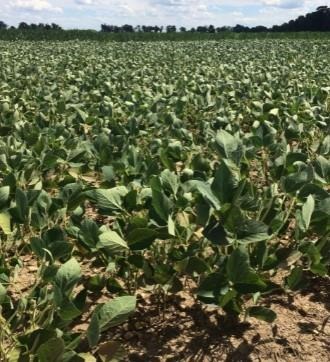By Lyndon Kelley and Michael Staton
Watching your crops suffer in drought conditions can be a powerful motivator to buy irrigation equipment. If you’re looking into making an irrigation equipment investment, answer these three questions before spending a dollar:
- Is it feasible in that you have the water supply and the land base/configuration to allow irrigation?
- Will the irrigation increase the average yield of the crops in the rotation enough to generate the additional income to pay for the irrigation system and additional annual operating costs?
- Will the irrigation system be operable in time to make a substantial impact on yield?
The irrigation water supply is often a challenge overlooked in the heat of the moment during a drought. Without adequate water for your irrigation system, your investment becomes less valuable and often becoming discounted used equipment. In Michigan, constructing a large volume water withdrawal without a registration could result in large fines. The Michigan large volume water registration process may take minutes to months depending on the current status of the watershed you will be pulling from. In Indiana, the required registration process is a phone call to the Indiana Department of Natural Resources and is not likely to become a limiting factor for a quick irrigation investment.
Water supplies need to be adequate for the production area. Michigan and Indiana water use by most field crops and vegetable crops will be near 0.25 inch per day for at least a few weeks each year. To adequately apply the 0.25-inch daily crop removal, your irrigation water supply needs the capacity to pump 5 gallons per minute (gpm) per acre. At times of peak need, a 500 gpm pump will run 24 hours a day seven days a week to replace the water used by 100 acres of crops.
Irrigation investments often have a long life but also require a long investment time period to work financially. Irrigation can often increase commercial corn yields by 65-70 bushels per acre on a five-year average on sandy and sandy loam soils. Loam soils with higher water holding capacities will often not increase average yield enough to justify irrigation investments. New irrigation investments that start in June rarely come online in time to greatly increase yield. Much of yield potential is set by July, making the concept of rescuing the year a fallacy.
In drought seasons, irrigation applications are needed in corn prior to tasseling and in soybeans before R3 to result in substantial yield benefits. June water shortages will delay crop development pushing the crucial water need periods later. July and early August are our driest months, and a corn crop forced to pollinate and fill ears in late July will further decrease yield potential. Delayed soybean has the advantage of being able to survive some summer drought and make use of late August rains or irrigation to make yield.

Hot, dry summers are good times to sell used equipment. Producers with little experience can be lured into an investment that can be better done with more planning. Be leery of used equipment that commonly shows up for sale in a dry summer. Parts from a wrecked pivot span can look very good if you’re not accustomed to working on them. Patching and straightening pipe and bracing can leave structural challenges and leaks. The high cost of labor and repair parts often results in a cost near the price of new equipment. A traveler can be a low-cost, used purchase, but a replacement hose can easily be two to three times the cost of the salvaged gun and cart.
Start planning field irrigation investment a year ahead of when the system is needed. Typically, the prices on new center pivot irrigation equipment are at their highest in June and July. Through fall, September rebates and incentives help to reduce cost. Field/fence row clearing and underground piping are other reasons fall and winter are typical irrigation expansion seasons. Power companies suggest a six-month lead time on new three-phase power connection. Center pivot systems ordered late winter often arrive May-June in years of high demand-all good reason to start your irrigation project early.
Drip irrigation for hand harvest production or fruit production is one type of irrigation that is readily available in a few day. If you have an adequate water supply, a trip to a drip irrigation supply company can set you up with drip tape, filters, manifold tubing, and connections that can be assembled and have you running in hours on areas of a few acres.
Irrigation investments need to be profitable. Long-term yield increases or new irrigated crop option profit levels need to be greater than the annual ownership and operating cost of the irrigation system. The lowest annual ownership and operating cost for irrigation systems are $130 or more per irrigated acre and can easily double or triple with smaller field sizes, irregular-shaped fields, limited availability of water and the lack of three-phase electric.
Source : msu.edu